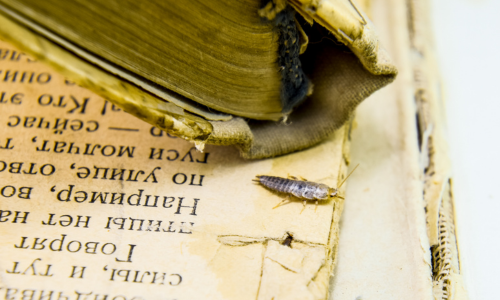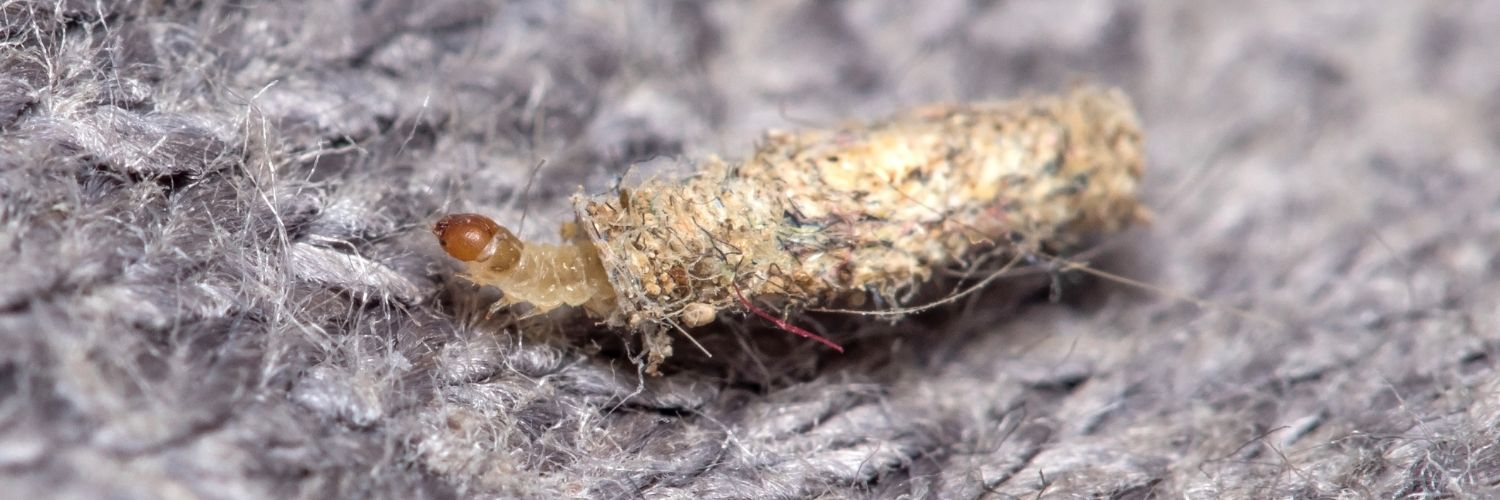Silverfish, sometimes called silverfish bugs, are small, six-legged wingless creatures. They are often found scurrying about in the dark corners of homes, searching for bits of food and shelter.
During a recent trip of mine to Ireland, I heard of a woman who recently had to navigate an exceptionally massive infestation of silverfish. She’d told Dublin Live that they were so numerous that she found them in her baby’s milk, slept with a hooded jacket on because she was “afraid those things will crawl all over me,” and saw upwards of 60 a day.
Living in an apartment complex, it was difficult for her to overcome this infestation, as they seemed to be everywhere—in the communal area downstairs, as well as in the apartments of others living in the complex.
After hearing this woman’s story, I decided to gather some of my research on silverfish and pen this post to answer a few important questions.
Are silverfish harmful?
I suppose that the answer to this question depends on how you define harm. These silver-colored scaly pests can be harmful in the sense that they can wreak havoc on your lifestyle—gingerly chewing the corners of family photographs, nibbling away at your favorite novels, and dragging their teeth (as they have weak jaws) along that well-worn cozy sweatshirt that you like to wear on Saturday mornings as you putter around the house with your lukewarm coffee.
In addition to damage caused by their dietary pleasures, their urine can be problematic too, staining your papers, books and fabrics yellow. Make sure to look out for the tiny droppings they leave behind, which resemble small whole peppercorns.
They are not harmful, though, in terms of being disease-carriers. Silverfish—

- Do not carry viruses (like some flies)
- Do not carry bacteria (like ticks)
- Do not carry fungi
- Do not carry parasites (like cockroaches)
- Do not bite (like some ants)
- Do not sting (like wasps)
- Do not carry venom or other poisonous toxins (like some spiders)
- Do not suck blood (like mosquitoes)
They can, however, spread other contaminants. Just as an ant walking across your picnic lunch can deposit bits of material that it had previously walked across on your apple core, a silverfish (and all other insects) can do the same. Silverfish walk around a lot and not always in the most sanitary locations (think: trash cans and public bathrooms). Thus, they can pick up germs from these locations and then transport them to your house, depositing them on food prep surfaces, around your food storage area and in your silverware drawer.
Silverfish can also cause allergic reactions, though this would only be in the case of extreme infestations. Silverfish (and firebrats), unlike other insects, molt continuously throughout their lives, passing through 45 to 60 instars (or development stages) in their lifetime: from egg to baby silverfish (a nymph) to larvae to adult. If your home isn’t vacuumed and dusted on a regular basis, their external shell molting can become a part of your household dust. This dust, over time, may irritate people who are allergic to silverfish, as their scales contain a protein called tropomyosin, which can combine with other allergens and sometimes cause allergic reactions. Allergic reactions may include coughing, sneezing, congestion and rashes.
What do silverfish eat?

A more appropriate question might be “What don’t silverfish eat?”, as it seems that there’s little that silverfish don’t consume. They’re attracted to starchy foods high in carbohydrates and proteins. To get technical for just a moment, the staple in their food is polysaccharides, which is a long chain of polymeric carbohydrates that encompass a variety of carbohydrates including glycogen, cellulose and starch. They need these carbohydrates to survive, grow and continue to molt.
They receive these necessary carbohydrate nutrients through eating paper, photographs, wallpaper paste, starched clothes, fabrics—especially cotton and linen—and carbohydrate-rich foods, such as sugar, flour, bread, rolled oats and other cereals. Unfortunately, the list of their food preferences doesn’t stop there. They will also eat mold, dandruff, dead skin, hair and dead insects. These insects will even feed on starches in the glue found in book bindings.
Unfortunately, even if you’re somehow a silverfish-food-hiding-expert and keep the plethora of these items at bay, silverfish can survive for several months without eating.
How do I get rid of silverfish?
Silverfish are one of the oldest and most primitive known insect species to still crawl our planet. Folks have been trying to get rid of them for a long, long time.
There are five ways in which you can get rid of silverfish in your home.
1. Reduce humidity
Silverfish live and develop in moist, humid places, needing high humidity levels to survive—typically between 75% and 95%. High-humid areas in your home tend to be your laundry room, bathroom, basement or attic. Use a dehumidifier and make the environment uninhabitable for silverfish.
2. Vacuum frequently
Regularly vacuum your carpets, floors and upholstered furniture. Use a wand extension to get into any cracks, crevices and corners. Remember that silverfish are nocturnal and like to remain in dark, out of the way spaces during the day. By vacuuming, you can reduce the number of places they use for shelter.
3. Use Six Feet Under
Silverfish often lay their eggs in hidden, humid locations. You definitely won’t find them out in the open very often. Spray Six Feet Under Non-Toxic Insect Killer into any cracks and crevices between floorboards and between baseboards and the wall to kill any of these eggs. Six Feet Under is an effective non-toxic, kill-on-contact spray that will terminate silverfish eggs. If you have wallpaper, carefully inspect it for any peeling, as you may need to apply Six Feet Under where peeling is present, as the silverfish could be living, eating, and laying eggs here.

Application
- Spray Six Feet Under into all visible cracks and crevices, especially in humid rooms.
- Allow it to dry. Follow up by puffing DE into these locations.
Note: Silverfish eggs are yellow, measure about 1 millimeter in length, (which is ½ of a nickel’s height) and are more elliptical than circular.
4. Use the Insect Buster
Fill the Insect Buster with Dust to Dust, a superb alternative to food-grade diatomaceous earth (DE). Dust to Dust is a fine-grain, porous, powdery earth substance. It is abrasive and easily breaks down an insect's fine layer of exoskeleton or cuticle, which causes said insect (in this case, silverfish) to lose moisture and dehydrate. This, in turn, causes death.
Our Dust to Dust Non-Toxic Insect Powder is a safer and more effective alternative to diatomaceous earth for insect control. It is proven to have kill times up to 50% faster than diatomaceous earth.
The reason I recommend a tool in distributing either powder is because its application, on its own, can be quite messy, inaccurate, and imprecise. You want precise distribution. In addition, the Insect Buster allows you to puff the DE into cracks and crevices, which is where the majority of silverfish are hanging out during the day.

Application
- For cracks and crevices, puff liberally, especially if you are puffing in wall voids.
- For humid spaces, distribute a thin line of powder around the perimeter of these rooms and any potential entry points, like windows.
- Note: Apply a fresh line when (and if) needed.
- Note: It’s best to leave DE unattended. It is not toxic, harmful or poisonous to you or your furry friends.
5. Store all dry goods in air-tight plastic container
This will limit a silverfish’s access to these items. A list of items to seal would include all cereals, flours, grains, pastas, beans and dry pet food.










